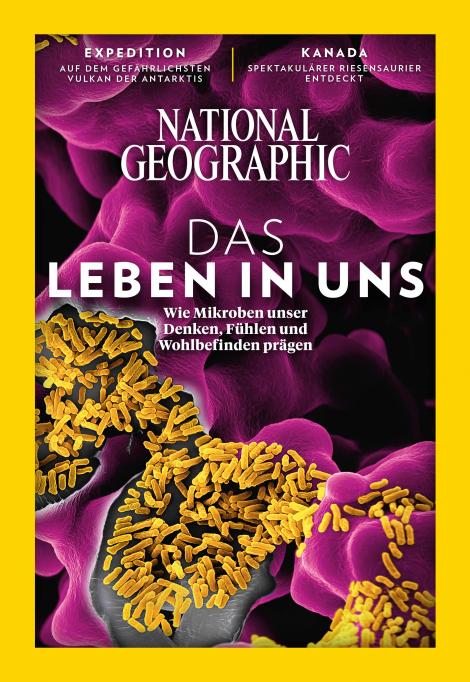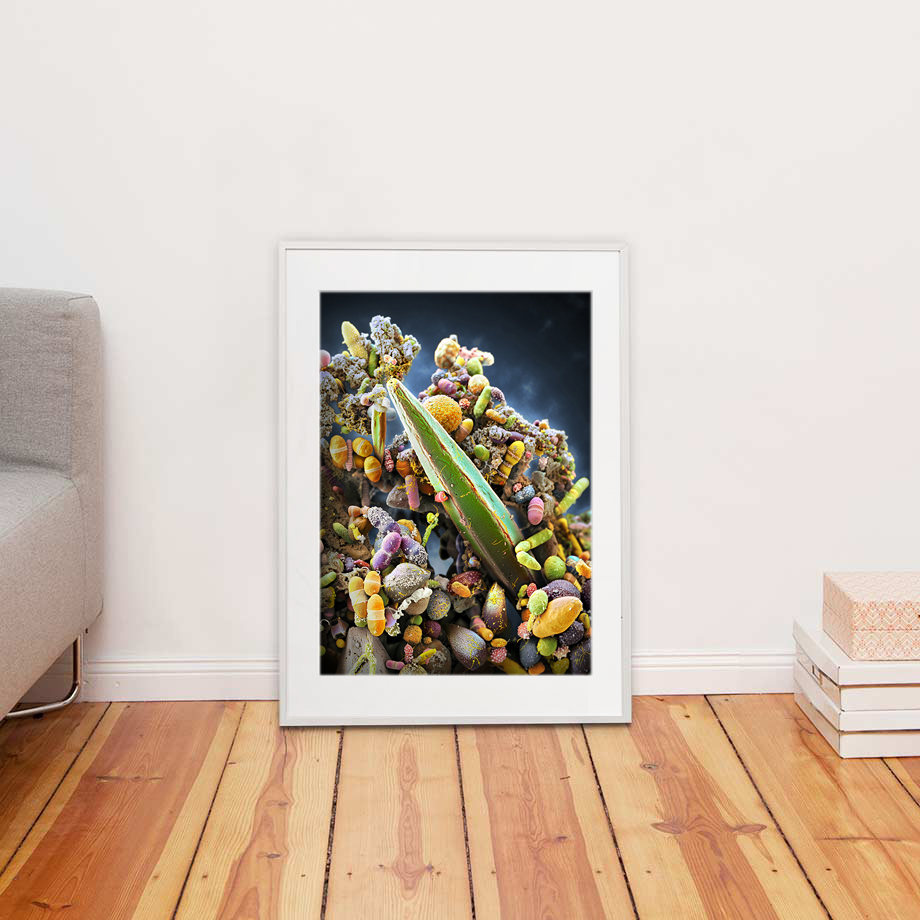National Geographic Deutschland has published their new Cover article ‘Das Leben in uns’ (April 2018). The series of images that I created for this article also includes very difficult material: Yersinia pestis is the causative agent of the plague – the infectious disease that has had a devastating effect on the human population throughout history. The article has been followed by the feature article of National Geographic USA (“How trillions of microbes affect every stage of our life – from birth to old age (January 2020).
Hamburg, 9 April 2018, and Washington D.C., 1 January 2020
The Cover:

The human gut teems with bacteria: staphylococci, enterococci, enterobacteria, mycobacteria, spirochetes, mycoplasma, corynebacteria, clostridia, lactobacilli, and streptococci,like the colony of E. coli shown on the cover of National Geographic Deutschland (April 2018). Many of the bacteria living on our skin and inside of us, are still unknown. In fact, we are living in their world, rather than vice versa: bacteria help us digest food and absorb nutrients, and they play a part in protecting our intestinal walls. Gut bacteria may also help regulate weight and ward off autoimmune diseases. In adult humans, the intestine bacterial flore makes up about five percent of the body weight, forming a fragile ecosystem (the so called ‘human microbiome’) which is sensitive to stress, unhealthy food, alcohol or illness. Under unfavorable circumstances our health is directly affected and as a result we suffer from e.g. overweight, mood changes or prone to various diseases.
This image has been produced using scanning electron microscopy (SEM) in combination with selectively assigning different colors to different structures.
Credits
© Martin Oeggerli 2008, supported by School of Life Sciences, FHNW.
Links
National Geographic, Deutschland (April 2018)
National Geographic, USA (January 2020)

Format: 30x20in (70x50cm) limited edition, 25 pieces: visit artist website

